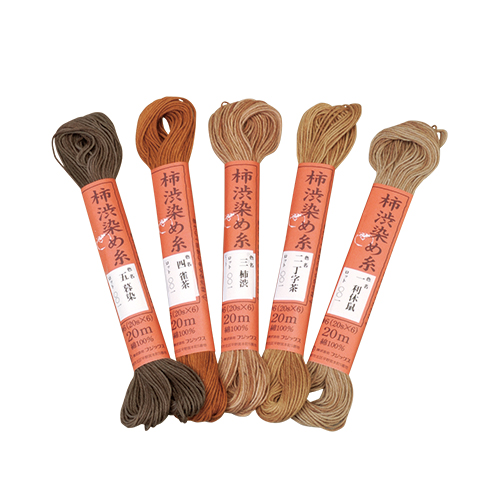MENU


| Composition | Total deci tex dtex |
Strength
N(gf)
|
Elongation
% |
Length | Number of Colors | Needles |
|---|---|---|---|---|---|---|
| 20s 1×6 |
1,950 | 28.4 (2900) |
11
|
20m |
5 |
Embroidery needles 3 |
*The count value corresponding to No.5.
Note on the use of KAKISHIBUZOME
Even in the same color number, its shade may slightly differ from others depending on the lot, because the dyeing process is being made all by hand. It has the peculiar smell to persimmon juice.
To avoid the extreme shade change, refrain from keeping it in the place that gets sunlight directly.
If you wash it with a mild alkaline detergent and/or in water which contains a lot of iron, it may turn black.
In case it was blackened, putting it in water which is diluted by vinegar or reconstituted lemon juice will bring the color back to some extent.
Do not use the detergent which contains bleach, because it will lose the colors.
Please pay special attention to handle as dyeing with persimmon juice is weak against rubbing and its color may stain to others.
.jpg)
Kakishibu (Astringent Persimmon Brown)
Sober brown of Washi paper tinted with persimmon astringent ingredient.
.jpg)
Rikyunezumi (Green Tea Gray)
Rikyu is the name of tea ceremony founder and associated with green color of tea leaves.
.jpg)
Suzumecha(Sparrow Head Brown)
Brown like sparrow’s head.
.jpg)
Chojicha(Clove Brown)
Noble deep brown as dyed in fragrant clove broth.Favorite color of old kabuki player for kimono dress.
.jpg)
Kurezome(Dusky Brown)
Very dark brown like sky at dusk.